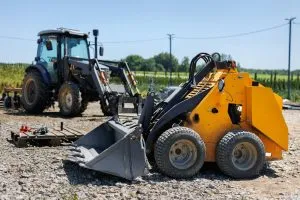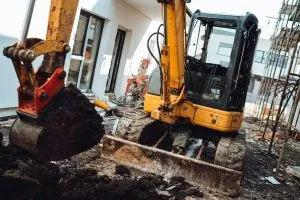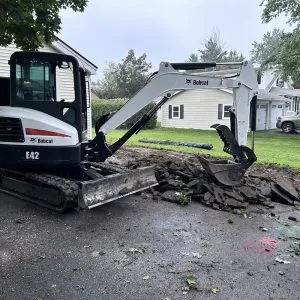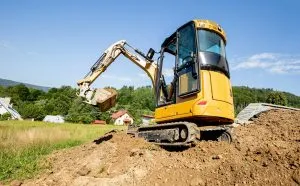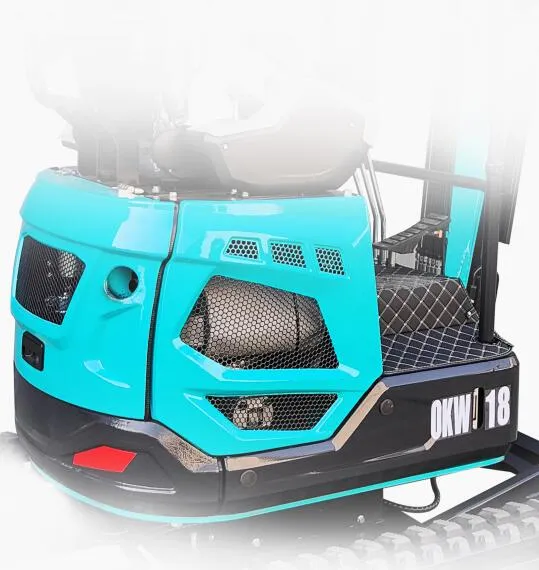Introduction
In the world of construction and material handling, heavy machinery plays a crucial role in getting the job done efficiently and safely. Among the vast array of equipment, excavators and forklifts are two of the most commonly used machines. While they both serve essential functions, they are designed for entirely different tasks. Understanding the differences between an excavator and a forklift can help businesses choose the right equipment for their needs and ensure that operations run smoothly.
Understanding Excavators
What is an Excavator?
An excavator is a versatile piece of construction equipment designed primarily for digging and earthmoving tasks. These machines are characterized by a rotating cab, a long arm (boom), and a bucket attached at the end of the arm. Excavators can vary in size, from compact models suitable for small projects to large machines used in heavy construction and mining.
Key Features of Excavators
- Rotating Cab: The cab of an excavator can rotate 360 degrees, providing the operator with a full range of motion. This feature is crucial for tasks that require digging in multiple directions without repositioning the machine.
- Boom and Arm: The boom is the part of the excavator that extends from the machine’s body, while the arm connects the boom to the bucket. This configuration allows the excavator to reach deep into the ground and move large amounts of material.
- Bucket: Excavators typically come with a bucket, which is used for digging, scooping, and transporting earth, rocks, and other materials. However, the bucket can be replaced with various attachments, such as breakers, augers, or grapples, depending on the task.
Functions of an Excavator
Excavators are primarily used for digging and excavation tasks. They are essential in construction projects for digging foundations, trenches, and holes. In addition to digging, excavators can be used for demolition, grading, lifting heavy objects, and even mining operations. Their versatility makes them indispensable in various industries, including construction, landscaping, and forestry.

Understanding Forklifts
What is a Forklift?
A forklift, also known as a lift truck or forklift truck, is a powered industrial vehicle designed to lift, carry, and move heavy loads over short distances. Forklifts are commonly used in warehouses, factories, and distribution centers to handle materials and goods. Unlike excavators, forklifts are primarily designed for indoor use, although there are outdoor models as well.
Key Features of Forklifts
- Forks: The most recognizable feature of a forklift is its two metal prongs, known as forks. These are used to lift and carry loads, typically on pallets.
- Mast: The mast is the vertical assembly that raises and lowers the forks. It can be tilted to stabilize the load during lifting and moving.
- Counterweight: To balance the load being lifted, forklifts are equipped with a counterweight at the rear of the vehicle. This feature is crucial for preventing the forklift from tipping over while carrying heavy loads.
- Compact Design: Forklifts are designed to be compact and maneuverable, allowing them to navigate tight spaces such as aisles in a warehouse.
Functions of a Forklift
Forklifts are specialized in lifting and transporting heavy materials, often in a warehouse or industrial setting. They are used to load and unload trucks, move pallets of goods, and stack materials in storage areas. Forklifts are also essential in manufacturing environments, where they are used to move raw materials and finished products.

Key Differences Between an Excavator and a Forklift
1. Purpose and Functionality
The primary difference between an excavator and a forklift lies in their intended functions. Excavators are designed for heavy-duty construction tasks such as digging, demolition, and earthmoving. They are highly versatile and can be used in a variety of outdoor environments, from construction sites to mines.
Forklifts, on the other hand, are designed for material handling. Their main function is to lift, carry, and move heavy loads within a controlled environment like a warehouse or factory. While forklifts can be used outdoors, their primary application is in indoor settings where precision and maneuverability are essential.
2. Design and Structure
The design of an excavator is centered around its ability to dig and move earth. The rotating cab, long boom, and powerful hydraulic system are all tailored to these tasks. Excavators are typically larger and more robust, capable of handling the rigors of outdoor construction work.
Forklifts, however, are designed with lifting and transporting in mind. Their compact design, counterweight system, and lifting forks are all optimized for moving goods efficiently in tight spaces. Unlike excavators, forklifts do not have a rotating cab or a long arm, as these features are unnecessary for their primary functions.
3. Mobility and Maneuverability
Excavators are equipped with tracks or wheels that allow them to move over rough terrain. However, their movement is relatively slow, and they are not designed for rapid transportation over long distances. The focus is on stability and power, which are essential for digging and lifting heavy materials.
Forklifts are built for maneuverability in confined spaces. They are typically smaller, with a tighter turning radius, allowing them to navigate narrow aisles and tight corners. Forklifts are also faster than excavators when it comes to moving from one location to another, although their speed is still limited compared to other vehicles.
4. Power and Operation
Excavators are powered by diesel engines and rely on hydraulic systems to operate the boom, arm, and bucket. The emphasis is on power and precision, allowing operators to perform complex tasks with heavy materials.
Forklifts can be powered by various sources, including diesel, electricity, and propane. The choice of power source depends on the environment in which the forklift will be used. For instance, electric forklifts are preferred in indoor settings due to their low emissions. The operation of a forklift is simpler than that of an excavator, with controls primarily focused on lifting and moving loads.

Conclusion
While both excavators and forklifts are essential machines in their respective fields, they are designed for very different tasks. Excavators excel in digging and earthmoving, making them indispensable in construction and mining. Forklifts, on the other hand, are the backbone of material handling in warehouses and factories. Understanding these differences is crucial for businesses to choose the right equipment for their needs, ensuring efficiency, safety, and productivity in their operations.
FAQs
What are the main uses of an excavator?
Excavators are primarily used for digging, demolition, earthmoving, and lifting heavy materials in construction and mining.
Can a forklift be used outdoors?
Yes, forklifts can be used outdoors, but they are primarily designed for indoor use, particularly in warehouses and factories.
What is the key difference in mobility between an excavator and a forklift?
Excavators are slower and designed for stability on rough terrain, while forklifts are more maneuverable and faster, especially in confined spaces.
Which machine is more versatile, an excavator or a forklift?
An excavator is generally more versatile due to its ability to perform a wide range of tasks, including digging, demolition, and lifting.
Are excavators and forklifts powered by the same type of engine?
Excavators typically use diesel engines, while forklifts can be powered by diesel, electricity, or propane, depending on their use.
Why is a counterweight necessary for a forklift?
A counterweight is essential for balancing the load being lifted, preventing the forklift from tipping over during operation.


